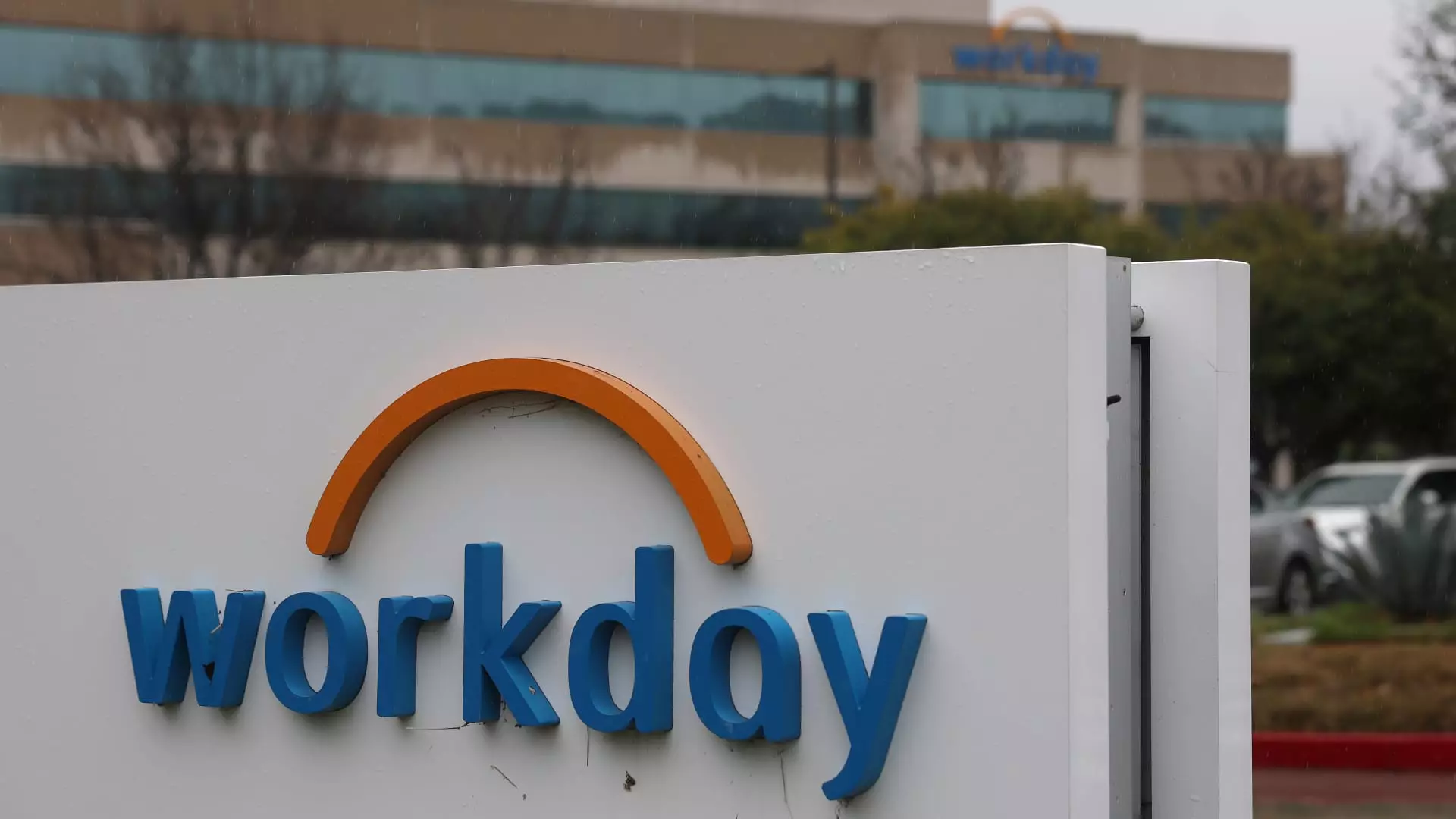Workday, a titan in the enterprise SaaS industry, has long sat at the intersection of innovation and stagnation. Boasting a market valuation of nearly $60 billion and a client portfolio that includes over 60% of Fortune 500 companies, it’s easy to view the company as a formidable leader. Yet beneath this impressive facade lies a troubling truth: despite consistent growth, Workday has struggled to deliver consistent profitability and gain ground against peers. This paradox calls into question whether the company’s recent strategic shifts are signs of genuine renewal or merely window dressing—a calculated attempt to appease impatient stakeholders amid mounting challenges.
While the company’s long-term customer retention rate of 98% underscores its sticky business model, this metric alone doesn’t tell the full story. The enterprise software sector is fiercely competitive, with giants like ServiceNow, SAP, and Salesforce commanding large slices of the market share. Over the past three to five years, Workday has significantly lagged behind these rivals, translating into an average underperformance of nearly 20 percentage points. This divergence highlights a fundamental issue: innovation and revenue growth alone are insufficient if margins erode and profitability remains elusive.
The root cause of this predicament lies in the company’s aggressive growth-at-all-costs mentality—a strategy that fueled early success but now exposes its vulnerabilities. As revenues ballooned from under $300 million pre-IPO to close to $9 billion, sustaining such exponential expansion has become increasingly difficult. The law of large numbers looms large, revealing that the ease of rapid growth diminishes as the business matures. Now, investors are questioning whether Workday’s growth story is sustainable, especially given its persistent profitability shortfalls.
Leadership Transition: A Hope for Fresh Strategic Direction?
The appointment of Carl Eschenbach as CEO marks a pivotal moment, one that could either herald a necessary reorientation or signal further missteps. Eschenbach’s background as a seasoned executive with a track record at VMware lends credibility; but his alignment with the company’s strategic vision remains to be proven. The departure of co-founder Aneel Bhusri, who built Workday from the ground up, signifies an acknowledgment that running a large, mature company demands different skills. Bhusri’s elevation to executive chairman is a recognition of his visionary contributions but also a tacit admission that the entrepreneurial approach that fueled early growth may no longer serve the company’s current needs.
The recent multiyear plan announced at the financial analyst day offers a promising glimpse into a more disciplined, shareholder-centric path forward. Initiatives such as a $5 billion buyback program, targeted margin improvements, and strategic focus on free cash flow reflect a shift from high-growth to high-quality growth. These measures aim to deliver steadier returns and improve the company’s valuation multiple—traditionally a sore spot for Workday, which trades at a discount compared to its peers. Nevertheless, skepticism persists: can a company that has historically prioritized top-line expansion pivot effectively without sacrificing innovation and customer loyalty? Only time will tell whether this course correction will translate into tangible, sustainable value.
Activist Investors: Catalysts or Disruptors?
Elliott Management’s sizable $2 billion stake signals a decisive endorsement of Workday’s new direction but also raises critical questions about corporate governance and strategic independence. Activist investors like Elliott often push for short-term gains, and critics worry that their involvement could tilt the company’s focus toward financial engineering rather than long-term innovation. However, Elliott’s history indicates they are capable of constructive engagement, especially when management demonstrates a willingness to adapt.
Elliott’s support for Eschenbach’s leadership and the new strategic initiatives hints at a possible partnership aimed at restoring investor confidence. Their extensive due diligence, carried out over years and across industries, suggests they believe Workday’s current challenges are surmountable. Still, the company’s founder-controlled structure, with Bhusri holding over 70% voting power, complicates matters. It invites concerns over governance and whether the interests of majority voting shareholders align with broader stakeholder expectations. The recent appointment of an independent figure at the executive level could be a step toward addressing these governance concerns, fostering greater investor trust.
Focusing on Growth Through Innovation and Strategic Acquisitions
One of Workday’s most promising avenues for revitalization is its strategic emphasis on integrating AI and automation into its solutions. Surging 200% year-over-year in AI-based revenues, these innovations could redefine HR functions by automating repetitive tasks and enhancing decision-making processes. The recent acquisitions like Sana, Paradox, and Flowise exemplify a targeted approach to bolstering AI capabilities, positioning Workday at the forefront of enterprise automation.
However, relying on aggressive acquisitions poses risks of overextension, especially without a clear integration strategy. The company’s substantial cash reserves—over $8 billion in net cash—offer a financial cushion, but also invite criticism over whether capital is being deployed effectively. Critics argue that such an approach may lead to bloated costs and dilutive effects if not managed meticulously. Ideally, these strategic moves should serve to accelerate growth and margin expansion organically, rather than merely inflating the top line.
Undoubtedly, Workday operates in a challenging environment where the demand for flexible, industry-specific solutions is rising. Its ability to adapt quickly, leverage AI, and execute disciplined financial strategies will determine whether it can turn its recent upheaval into a lasting renaissance or whether it remains a cautionary tale of growth ambitions outpacing true profitability. The company stands on the precipice of significant change, and the outcome hangs in the balance between strategic foresight and operational execution.

